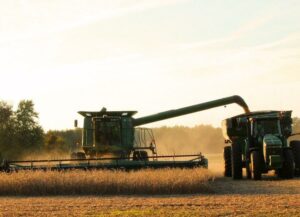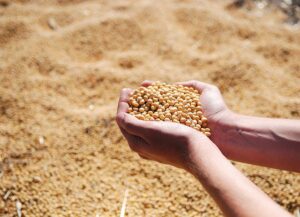Alvaro Garcia
Almost all (98%) of the solvent-extracted soybean meal is used as an animal protein source worldwide. In the US, nine percent of this byproduct is fed to dairy cattle. More recently, canola meal has been used as a viable alternative replacement because of its availability and the quality of its protein.
Recent experiments have also reported consistent improvements in milk production and more efficient dietary nitrogen utilization when canola meal replaced soybean meal in dairy cow rations. Soybean meal has higher rumen degradable protein (50-70% of CP) when compared to canola meal (48-56% of CP), which is probably responsible for this difference in nitrogen utilization between diets containing both protein sources.
Since dairy cow diets also include forages that supply relatively high crude protein concentrations (i.e. alfalfa), it would be important to explore if there are any associative effects between the latter and canola or soybean meals in the dairy cow’s ration. Alfalfa silage is also a good source of rumen fermentable protein and NPN, which are likely to affect milk production and milk protein yield.
Recent research evaluating canola meal compared to other protein meals and forages, showed that milk protein concentration increased with canola but not with other meals, when fed with grass or legume silages as the forage base.
Experiments have also shown that when alfalfa silage rather than corn silage was the predominant forage in the diet it increased milk yield, total microbial protein, total essential amino acids flow to the omasum. At the present time there is no research that has compared the use of canola meal as the main supplementary protein, with diets containing soybean meal and alfalfa and corn silages as the forage base.
A recent experiment (Paula et al. 2020) was conducted to evaluate milk production and milk components in cows fed alfalfa and corn silage supplemented with soybean meal or canola meal. Part of the objectives were also to test if partial replacing of alfalfa silage with corn silage would modify N utilization and milk production and milk components.
Animals used in this experiment were multiparous cows (2.8 ± 0.9), weighing 684 kg (± 56), with 102 days in milk (± 41), and producing 49 kg of milk/day (± 4), and primiparous cows weighing 565 kg (± 46), 123 days in milk (± 30), and producing 40 kg of milk/d (± 4). All cows were blocked by parity and days in milk into 8 groups to obtain 4 groups each of multiparous and primiparous cows randomly allocated in each block to the experimental treatments.
Dietary treatments were in a 3 × 2 factorial and consisted of 3 ratios of alfalfa to corn silages and the two protein supplements, soybean meal and canola. Diets were formulated to contain 16% CP, 31 to 33% NDF, and 60:40 forage-to-concentrate ratio on a dry basis. Feed ingredients were 60% forage, 8 to 15% high-moisture corn, 2 to 5% soy hulls, and 1.3% mineral-vitamin premix. The forage ratios used were 50:10, 30:30, and 10:50 on a DM basis using soybean meal and canola meal as the main protein supplements.
Effects of replacing soybean meal with canola meal
The results showed that replacing soybean meal with canola meal increased milk production, milk protein, and lactose, and decreased MUN and urinary N excretion regardless of the ratios of both forages utilized. When looking at the proportion of alfalfa and corn silages the 30:30% ratio (dry basis), which had 33% NDF and 43% NFC, or the greater ratios of corn silage (10/50% alfalfa silage to corn silage, respectively) with 31% NDF and 43% NFC, increased milk production and milk protein yield and concentration, and ECM when compared with cows fed diets with more alfalfa silage (10:50%).
Milk yield was greatest for cows fed low alfalfa silage, intermediate for medium alfalfa silage, and lowest for high alfalfa silage (38.6, 37.2, and 34.7 kg/d, respectively). Milk urea nitrogen concentration decreased when canola meal replaced soybean meal. Total urine volume decreased as the proportion of alfalfa silage decreased in the diets. Forage source did not affect nitrogen intake, total nitrogen, or urea nitrogen urinary excretion.
These results indicate that canola meal can replace soybean meal with a positive impact both in production as well as the efficiency of nitrogen utilization.
Reference
E M Paula, G A Broderick, A P Faciola. Effects of Replacing Soybean Meal with Canola Meal for Lactating Dairy Cows Fed 3 Different Ratios of Alfalfa to Corn Silage. J Dairy Sci. 2020 Feb;103(2):1463-1471.
© 2020 Dairy Knowledge Center. All Rights Reserved.











